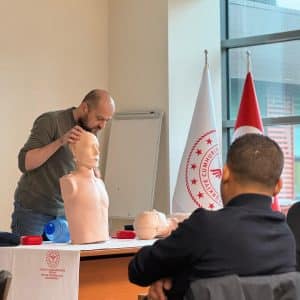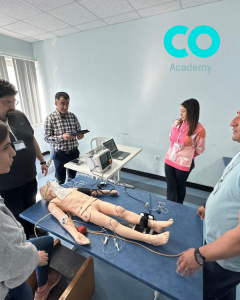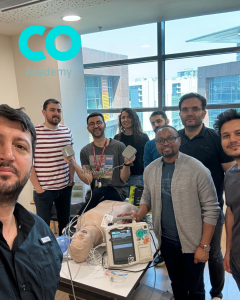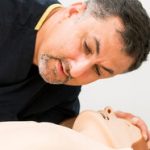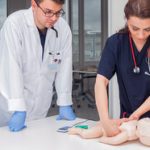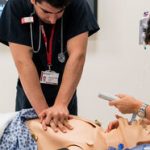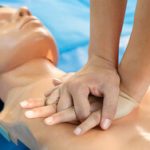
BLS course & ACLS course course
aha certıfıcatıon
everything to be more professional
BLS & ACLS Course
22/03/2024 – 23/03/2025
Basic Life Support (BLS), Advanced Cardiovascular Life Support (ACLS) and Pediatric Advanced Life Support (PALS) Course support course will be held on
American Heart Association (AHA) Certification
CPR and ECC
The AHA is the leader in resuscitation science, education, and training, and publisher of the official Guidelines for CPR and ECC. Millions of healthcare providers and others trust the AHA for their lifesaving training, and 100% of the AHA’s profits go back into supporting its lifesaving mission.
22/03/2024 – 23/03/2025
BLS Course Objectives :
– After successfully completing the BLS Course, students should be able to;
– Describe the importance of high-quality CPR and its impact on survival
– Describe all of the steps of the Chain of Survival
– Apply the BLS concepts of the Chain of Survival
– Recognize the signs of someone needing CPR
– Perform high-quality CPR for an adult
– Describe the importance of early use of an automated external defibrillator (AED)
– Demonstrate the appropriate use of an AED
– Provide effective ventilation using a barrier device
– Perform high-quality CPR for a child
– Perform high-quality CPR for an infant
– Describe the importance of teams in multi rescuer resuscitation
– Perform as an effective team member during multi rescuer CPR
– Describe the technique for relief of foreign-body airway obstruction for an adult or child
– Describe the technique for relief of foreign-body airway obstruction for an infant.
ACLS Course Objectives :
After successfully completing the ACLS Course, students should be able to;
– Apply the BLS, Primary, and Secondary Assessments sequence for a systematic evaluation of adult patients
– Perform prompt, high-quality BLS, including prioritizing early chest compressions and integrating early automated external defibrillator (AED) use
– Recognize and perform early management of respiratory arrest
– Discuss early recognition and management of ACS and stroke, including appropriate disposition
– Recognize and perform early management of bradyarrhythmias and tachyarrhythmias that may result in cardiac arrest or complicate resuscitation outcome
– Recognize and perform early management of cardiac arrest until termination of resuscitation or transfer of care, including immediate post-cardiac arrest care
– Model effective communication as a member or leader of a high-performance team
– Evaluate resuscitative efforts during a cardiac arrest through continuous assessment of CPR quality, monitoring the patient’s physiologic response, and delivering real-time feedback to the team
– Recognize the impact of team dynamics on overall team performance.
– Discuss how the use of a rapid response team or medical emergency team may improve patient outcomes
– Define systems of care.
Pediatric Advanced Life Support (PALS) Course
This course aims to reinforce the important concepts of a systematic approach to pediatric assessment, basic life support, PALS treatment algorithms, effective resuscitation and team dynamics. Students will work on to complete PALS skills practice and skills testing.
Course includes didactic lessons, simulated clinical scenarios and learning stations.
Objectives
– Recognition of patients who do and do not require immediate intervention
– Recognition of cardiopulmonary arrest early and application of CPR within 10 seconds
– Differentiation between respiratory distress and failure
– Early interventions for respiratory distress and failure
– Differentiation between compensated and decompensated (hypotensive) shock
– Early interventions for the treatment of the shock
– High-quality Child CPR AED and Infant CPR
– Differentiation between unstable and stable patients with arrhythmias
– Clinical characteristics of instability in patients in arrhythmias
– Apply team dynamics
– Post cardiac arrest management
AMERICAN HEART FOUNDATION (AHA) CERTIFIED TRAININGS
The American Heart Association (American Heart Foundation), although originating from the United States of America, is a foundation recognized by the whole world. The scientific studies it conducts and supports shed light on health all over the world, and it is the most accepted organization in the world with the training programs it has developed especially in first aid, automatic external defibrillator use and especially in advanced cardiac life support.
Since 1924, the American Heart Association has been working to increase the chances of survival and is the world’s largest volunteer organization. The American Heart Association’s trainings are globally recognized and have master certification programs in over 90 countries.
Cost :
– The course fees: 1250 USD
Duration :
BLS – 2 days, 8 hours/day
ACLS – 2 days, 8 hours/day
Certificate :
By the end of the course, doctors will get a certificate from the AHA CERTIFICATION from the host
Venue :
Medical University Hospital – Istanbul .
How To Apply :
– Please send us your CV on our Email: cenkozdil@comedturkey.com
– Write on the email title : ( BLS and ACLS course).
– Note: You have to send 10% from the fees during the application period to confirm your seat.
– We will send to you an Invitation letter to apply for Visa.
Accommodation :
+905325525842 – cenkozdil@comedturkey.com

